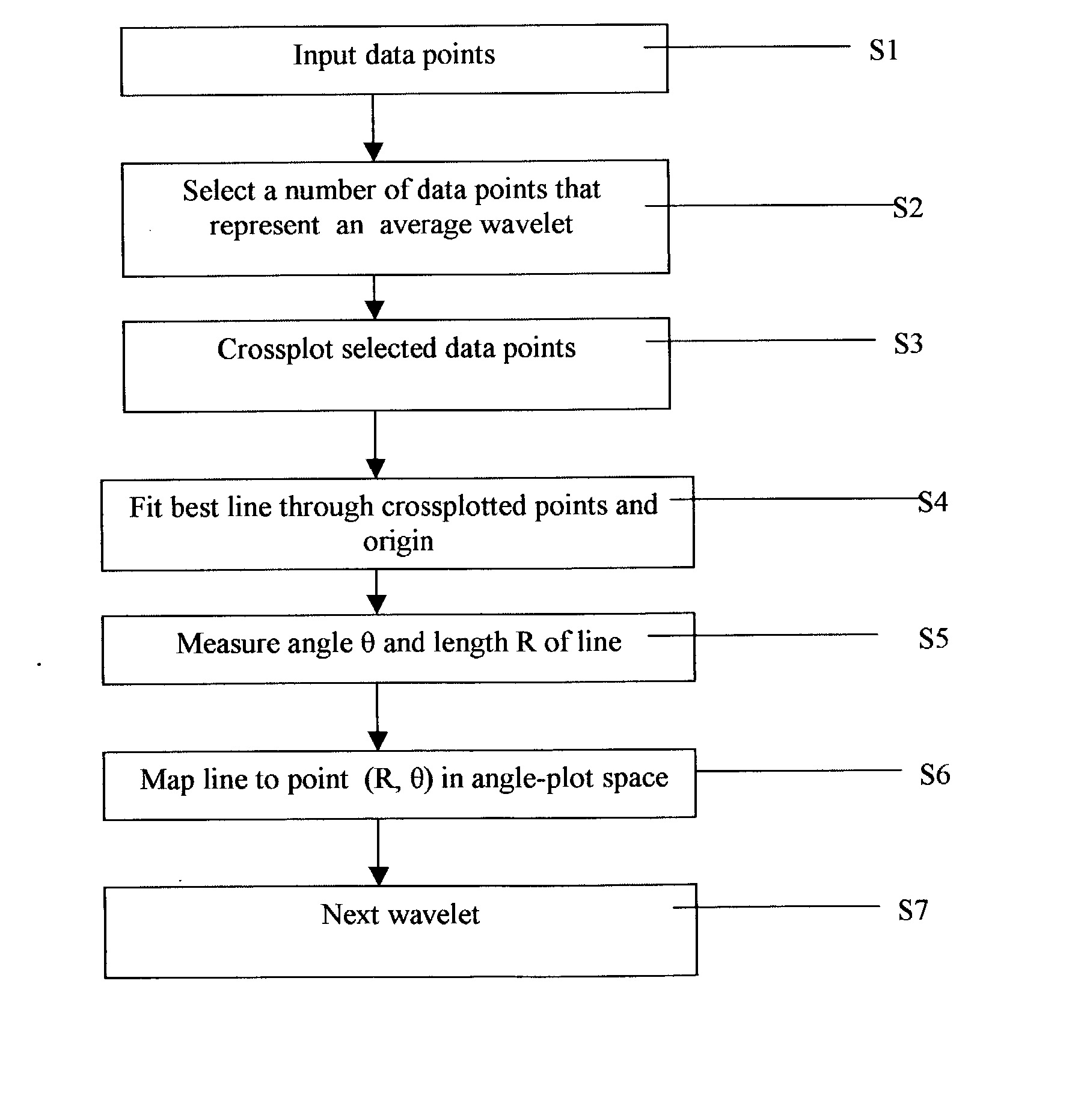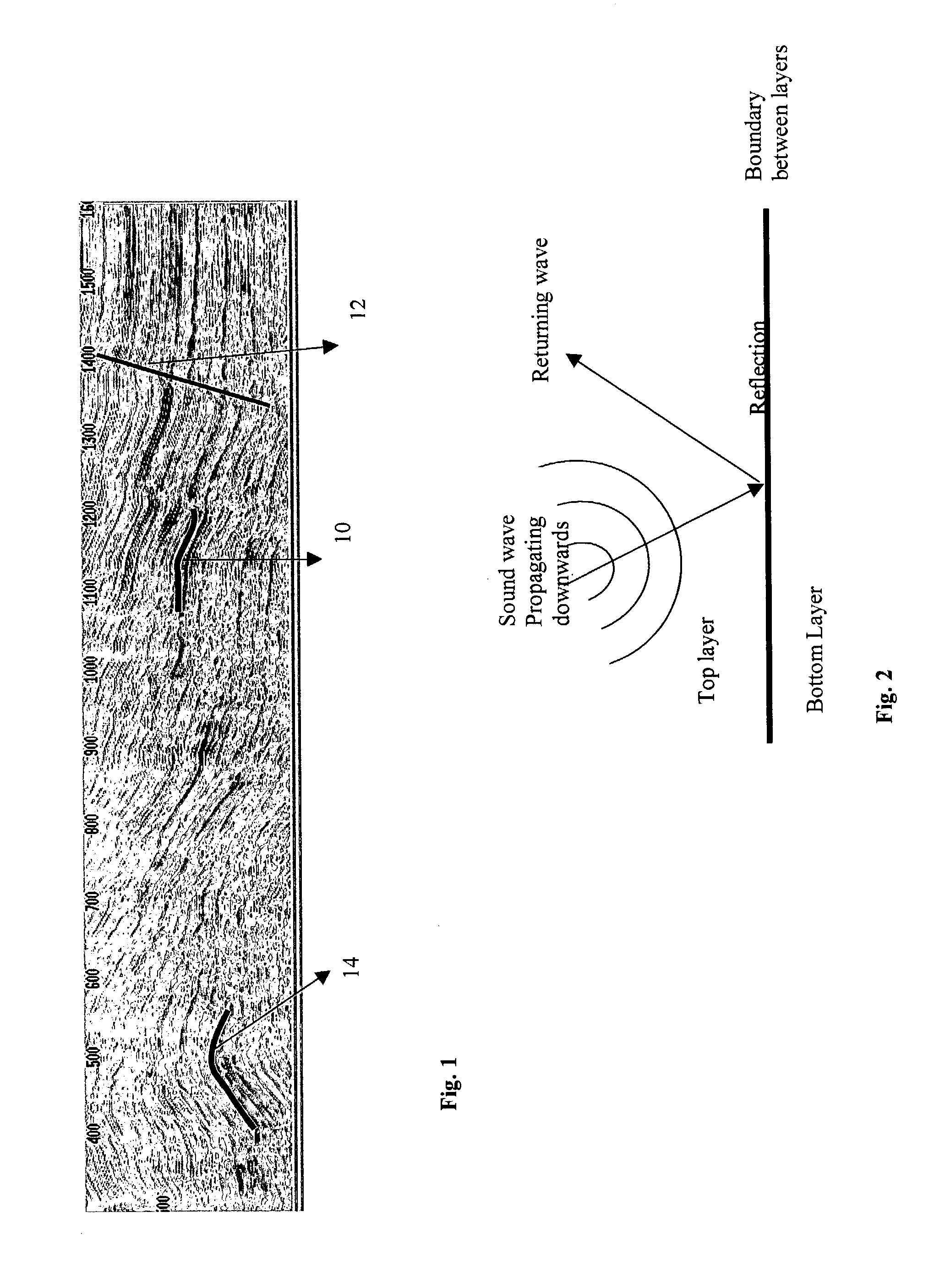Crossplot analysis of A.V.O. anomolies in seismic surveying
a technology of cross-plot analysis and seismic surveying, which is applied in the field of cross-plot analysis of a.v.o. anomolies in seismic surveying, can solve the problems of large seismic 3-d survey volume, inability to carry out manual matching by simple inspection, and geologists often miss avo anomalies
- Summary
- Abstract
- Description
- Claims
- Application Information
AI Technical Summary
Benefits of technology
Problems solved by technology
Method used
Image
Examples
Embodiment Construction
[0141] Reference is now made to FIG. 21, which shows seismic traces of synthetic seismic data on which the crossplot--angleplot procedure was practiced. FIG. 21 shows two different seismic data sets which were computer generated, one for brine filled sand / shale contact, that is a set of "no-oil" data, and the other for gas sand / shale contact. Each of the data set therefore contains different clustering. Between the two datasets there are four events representing AVO anomalies of classes I, II, III, and IV (top to bottom respectively in the figure). Elastic parameters for the AVO data were taken from Barnola and White, 2001. The objective of the example is to show that when using the crossplot--angleplot procedure it is possible to identify all classes of AVO anomalies and separate them from the no-oil data. The two datasets displayed in FIG. 21 are seismic traces as a function of reflection angle. The AVO signature indicates how the amplitude changes as a function of the reflection ...
PUM
 Login to View More
Login to View More Abstract
Description
Claims
Application Information
 Login to View More
Login to View More - R&D
- Intellectual Property
- Life Sciences
- Materials
- Tech Scout
- Unparalleled Data Quality
- Higher Quality Content
- 60% Fewer Hallucinations
Browse by: Latest US Patents, China's latest patents, Technical Efficacy Thesaurus, Application Domain, Technology Topic, Popular Technical Reports.
© 2025 PatSnap. All rights reserved.Legal|Privacy policy|Modern Slavery Act Transparency Statement|Sitemap|About US| Contact US: help@patsnap.com



